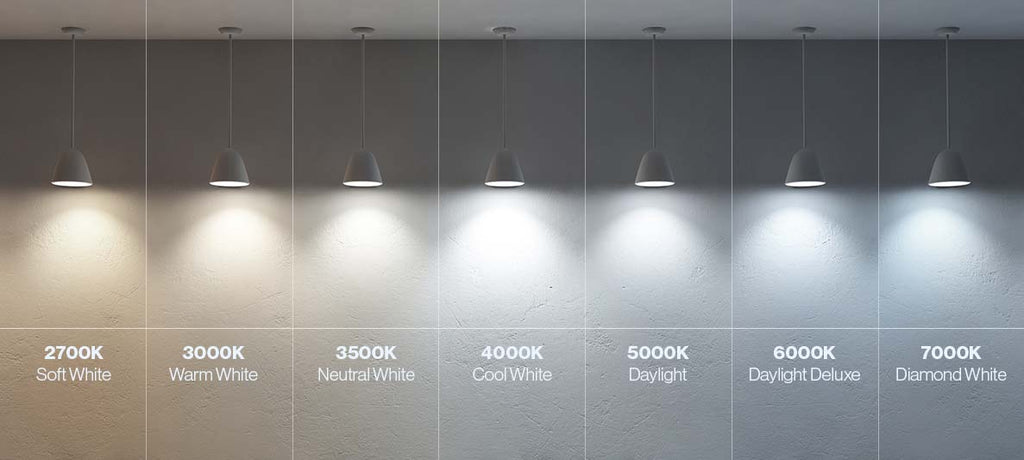Lumens, CRI, and Color Temperature - Light Quality
CRI and color temperature can make or break a space. Understanding how color and light quality affect your room or create the necessary ambiance can help you to define your light requirements, whether designing a room atmosphere or office workspace lighting.
Here are some quick things to consider about quality color rendering as you develop your ideal lighting plan.
Lumens
Lumens refers the amount of brightness a bulb emits. The higher the number, the brighter the bulb.
When creating your lighting layout in any space, you need to consider:
- The brightness of the bulb (the number of lumens a light produces)
- The spacing between your light fixtures (to produce adequate light beam spread without dark spaces in an office environment)
- How a room will be used
If you are lighting a workspace you may find you require higher lumen bulbs in order to adequately see your work. If you are lighting a living room you may prefer lower lumens, so the space is peaceful and inviting.
Want the best of both worlds for a dual-purpose room? Consider dimmable bulbs. Our dimmable bulbs work with a variety of dimming switches and allow you to choose the appropriate brightness level for every occasion.
Unsure how many LEDs are appropriate for your needs? We can help you determine what is appropriate for your unique project.
Wattage Equivalency & Power Efficiency
Wattage Equivalency allows you to compare an LED with an incandescent bulb that produces the same light output in lumens. For example, 60W incandescent bulbs deliver a brightness of 800 lumens, while an LED light with the same 800 lumens brightness features considerably less wattage.
If you study the technical specs in our products, you will find that our A19 LED has a 60W equivalency, but only consumes 9-watts. That’s quite an energy savings! Imagine the energy efficiency you can achieve over time with a roomful of LEDs, instead of power-hungry incandescent bulbs.
CRI
Color Rendering Index (CRI) refers to the quality of light on a scale of 0-100, with 100 being the closest to natural sunlight. It refers to the accuracy of the light source.
You may have heard people talk about the value of High CRI. Higher CRI is not only visually closer to sunlight, it also makes the colors and textures of an item stand out. Sunco's products usually run from CRI80 – CRI95 to provide you with clear definition and vibrant colors.
The human eye recognizes unnatural colors when items are viewed under a low CRI light source. This is one reason lighting a retail business properly is so important. Otherwise, the consumer might find the item they purchase looks different when they view it in sunlight or at a higher CRI.

Color & Variation
Color is measured in degrees of Kelvin (K) on a scale from 1,000 to 10,000. Color Temperature can have a dramatic impact on the space you plan to light. When discussing lighting, color temperature is described as either warm or cool light. Warmer color temperatures create a peaceful and relaxing space that works well in most public areas. Cooler temperatures promote enhanced concentration.
Our products come in a variety of color temperatures to help you achieve the perfect light quality in your home or office project. As you can see in the chart below, warmer colors tend to fall under 3000K. If you seek task lighting – for an office or garage or workshop – then you will likely want a light with 3100K or above. When lighting a retail display or providing security lighting, you will want something over 4500K to replicate daylight and bring out the crisp textures of what you are lighting in the room or outdoor space with a more blue-white style light beam.

Sunco color temperatures include:
- 2200K (Amber) --- Appears: Red
- 2700K (Soft White) --- Appears: Orange
- 3000K (Warm White) --- Appears: Yellow
- 4000K (Cool White) --- Appears: White
- 5000K (Daylight) --- Appears: Blue
- 6000K (Daylight Deluxe) --- Appears Silver/Multi-Colored
- 7000K (Diamond White)
- 8000K (Bright White)
- 9000K (Ultra Bright White)


